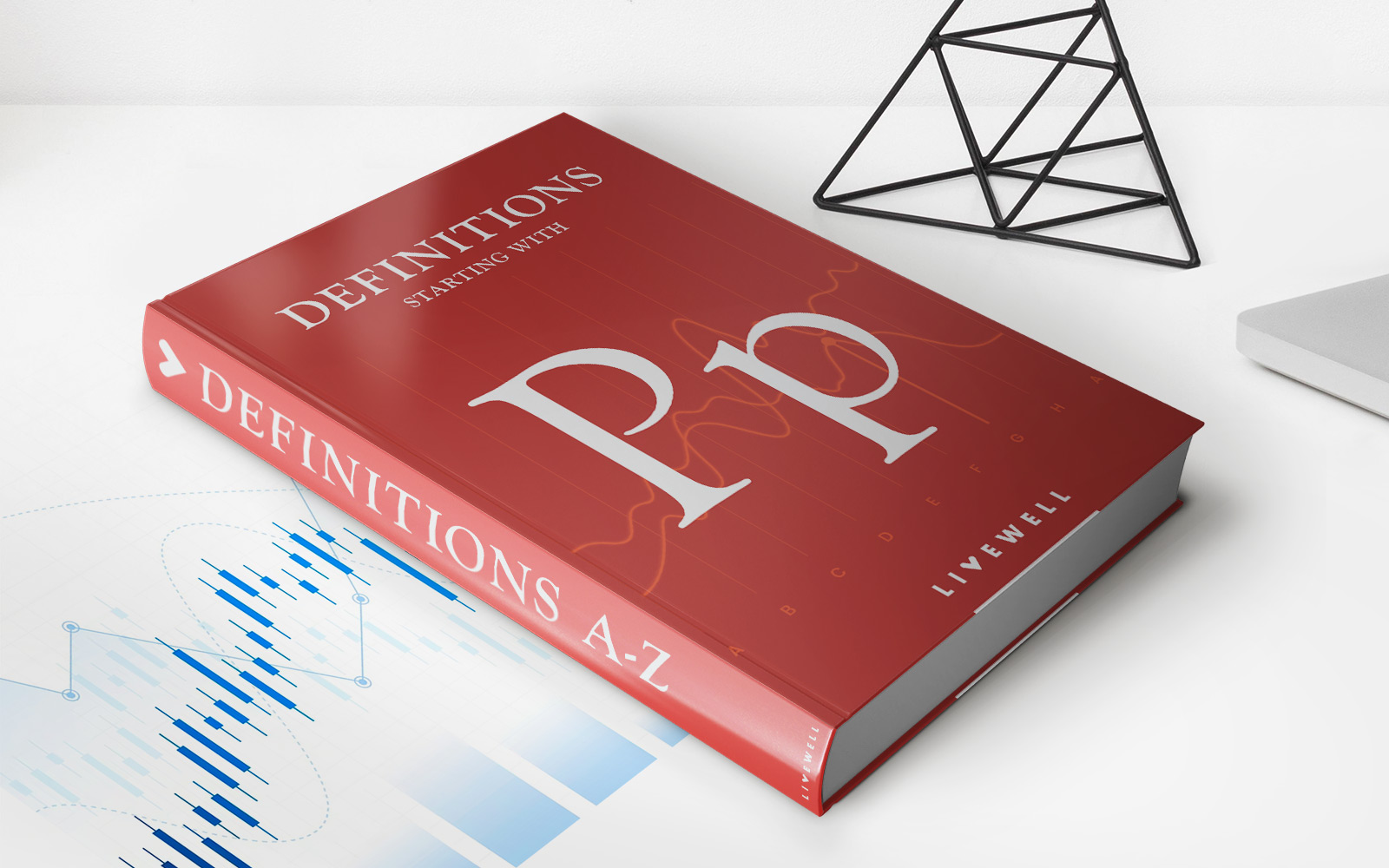

Finance
What Is Deferral In Accounting
Published: October 12, 2023
Discover the concept of deferral in accounting and how it relates to finance. Gain insights into the importance of deferral for accurate financial reporting.
(Many of the links in this article redirect to a specific reviewed product. Your purchase of these products through affiliate links helps to generate commission for LiveWell, at no extra cost. Learn more)
Table of Contents
Introduction
Welcome to the world of accounting! As an essential component of finance, accounting plays a crucial role in accurately recording, summarizing, and analyzing financial transactions. In the field of accounting, various principles and concepts are utilized to ensure the accuracy and integrity of financial information.
One such concept is deferral, which is utilized to recognize revenues and expenses in a timely and appropriate manner. Deferral in accounting refers to the practice of postponing the recognition of revenue or expense until a later point in time. This concept is essential in order to align revenues and expenses with the period in which they are earned or incurred.
Deferral is a fundamental principle that allows businesses to accurately measure their financial performance and comply with generally accepted accounting principles (GAAP) or international financial reporting standards (IFRS). By deferring the recognition of certain revenues and expenses, businesses can provide a more accurate representation of their financial position.
Throughout this article, we will explore the concept of deferral in accounting in greater detail. We will define deferral and discuss its importance in financial reporting. We will also delve into the various types of deferrals, providing examples to further clarify how they are applied in practice. So, let’s dive in and explore the fascinating world of deferral in accounting!
Definition of Deferral in Accounting
In the realm of accounting, deferral refers to the practice of postponing the recognition of revenue or expense until a later period. This is done in order to align the recognition of revenues and expenses with the period in which they are earned or incurred, ensuring accurate financial reporting.
Deferral is based on the accrual accounting method, which recognizes revenue and expense when they are earned or incurred, regardless of when the cash is received or paid. By deferring the recognition of certain revenues and expenses, businesses can avoid over or underestimating their financial performance in a given period.
When deferral is applied, revenue or expense is initially recorded as a liability or an asset on the balance sheet and is subsequently recognized as income or expense over time. This allows for a more accurate representation of the business’s financial position and performance.
It is important to note that deferral is different from accruals. While both concepts serve to align the recognition of revenues and expenses with the period in which they are earned or incurred, accruals involve recording the revenue or expense in the period in which it is earned or incurred, regardless of when the cash is received or paid.
Deferral can be applied to various types of transactions, such as revenue recognition, expense recognition, and tax liabilities. In the following sections, we will explore the different types of deferrals and provide examples to illustrate how they are utilized in accounting practices.
Types of Deferrals
There are several types of deferrals in accounting, each serving a specific purpose in recognizing revenue or expenses over time. Let’s explore the three main types of deferrals:
1. Deferred Revenue
Deferred revenue occurs when a company receives payment from a customer for goods or services that have not yet been delivered or rendered. Instead of recognizing the entire payment as revenue immediately, the company defers a portion of the payment as a liability on the balance sheet. This liability is gradually recognized as revenue over time as the goods are delivered or the services are provided.
For example, imagine a software company that sells annual subscriptions to its online platform. When a customer pays for a one-year subscription upfront, the company cannot recognize the entire payment as revenue in the current period. Instead, it defers a portion of the payment as deferred revenue and gradually recognizes it as revenue over the course of the subscription period.
2. Deferred Expenses
Deferred expenses refer to costs that have been paid in advance but have not yet been consumed or utilized. Instead of recognizing the entire expense immediately, the company defers a portion of the cost as an asset on the balance sheet. The expense is then gradually recognized over time as the asset is consumed or utilized.
For instance, consider a construction company that pays for a two-year insurance policy upfront. Rather than recognizing the entire insurance expense in the year of payment, the company defers a portion of the cost as a prepaid expense. The prepaid expense is gradually recognized as an expense over the course of the policy period.
3. Deferred Tax Liability
Deferred tax liability arises when there is a difference between the accounting treatment and the tax treatment of certain items. This often occurs when expenses are recognized for tax purposes before they are recognized for accounting purposes. The deferred tax liability represents the tax impact of these temporary differences and is gradually recognized over time.
For example, let’s say a company has taken advantage of accelerated tax depreciation, which allows for higher deductions in the early years of an asset’s life. While the company may expense the accelerated depreciation for tax purposes immediately, it must defer a portion of this expense as a deferred tax liability for accounting purposes. The deferred tax liability is then gradually recognized as an expense over the useful life of the asset.
These types of deferrals ensure that revenue and expenses are recognized in a manner that accurately reflects the economic reality of the transactions. By aligning the recognition of revenues and expenses with the period in which they are earned or incurred, businesses can present a more accurate picture of their financial performance.
Deferred Revenue
Deferred revenue is a type of deferral in accounting that occurs when a company receives payment from a customer for goods or services that have not yet been delivered or rendered. Instead of recognizing the entire payment as revenue immediately, the company defers a portion of the payment as a liability on the balance sheet. This liability is gradually recognized as revenue over time as the goods are delivered or the services are provided.
Deferred revenue is a common occurrence in industries such as software, subscription-based services, and pre-sales of goods. When a customer pays in advance for a product or service, the company is obligated to deliver or provide it in the future. Until that obligation is fulfilled, the payment is classified as deferred revenue.
Let’s take an example to illustrate how deferred revenue works. Imagine a company that sells annual subscriptions to its online platform for $1,200. When a customer purchases a subscription and pays the full amount upfront, the company cannot recognize the entire $1,200 as revenue in the current period. Instead, it defers a portion of the payment as deferred revenue and recognizes it as revenue over the course of the subscription period.
Suppose the subscription lasts for 12 months. In this case, the company would recognize $100 of revenue each month ($1,200 / 12 months) as the customer continues to access and utilize the platform. As each month passes, the deferred revenue decreases, and the recognized revenue increases until the entire $1,200 is recognized as revenue.
By deferring the recognition of revenue in this manner, businesses can accurately match the revenue with the periods in which the goods or services are actually provided. This practice provides a more accurate representation of the company’s financial performance and helps avoid distortions caused by the timing of cash inflows.
Proper accounting for deferred revenue is crucial to maintain accurate financial records. It is important for businesses to accurately track the amount of deferred revenue and ensure it is recognized as revenue in the appropriate periods. Failing to do so can lead to incorrect financial statements, misleading investors, and potential legal implications.
Overall, deferred revenue is a vital concept in accounting that allows businesses to recognize revenue in a manner that accurately reflects the delivery of goods or services. By deferring the recognition of revenue until it is earned, companies can provide a more transparent and accurate representation of their financial performance.
Deferred Expenses
Deferred expenses, also known as prepaid expenses, are costs that have been paid in advance but have not yet been consumed or utilized. Instead of recognizing the entire expense immediately, the company defers a portion of the cost as an asset on the balance sheet. The expense is then gradually recognized over time as the asset is consumed or utilized.
This type of deferral commonly occurs when businesses make prepayments for services, insurance policies, rent, or other expenses that cover a future period. By deferring the expense, the company ensures that the cost is recognized in the appropriate periods when it is actually incurred or consumed.
Let’s consider an example to better understand deferred expenses. Imagine a construction company that pays $12,000 upfront for a two-year insurance policy. Instead of recognizing the entire $12,000 as an expense in the year of payment, the company defers a portion of the cost as a prepaid expense. The prepaid expense is gradually recognized as an expense over the course of the insurance policy period.
In this scenario, the construction company would recognize $500 as an expense each month ($12,000 / 24 months) throughout the two-year insurance policy. As each month passes, the prepaid expense decreases, and the recognized expense increases until the entirety of the $12,000 is recognized as an expense.
By deferring the recognition of expenses in this manner, businesses can align the recognition of costs with the periods in which the related benefits are received. This approach provides a more accurate representation of the company’s financial performance and helps prevent fluctuations caused by one-time large expenses.
Proper accounting for deferred expenses is crucial for maintaining accurate financial records. Businesses must track and monitor prepaid expenses to ensure they are recognized as expenses in the appropriate periods. Failure to do so can result in distorted financial statements, misrepresentation of costs, and inaccurate profitability assessments.
Overall, deferred expenses play a vital role in accounting by allowing businesses to recognize costs in a manner that reflects the period in which they are incurred or consumed. By deferring the recognition of expenses until they are consumed, companies can provide a more accurate and transparent representation of their financial performance.
Deferred Tax Liability
Deferred tax liability is a type of deferral in accounting that arises when there is a difference between the tax treatment and the accounting treatment of certain items. This difference often occurs when expenses are recognized for tax purposes before they are recognized for accounting purposes. The deferred tax liability represents the tax impact of these temporary differences and is gradually recognized over time.
Deferred tax liability is a common occurrence in tax accounting, where tax laws and accounting principles may prescribe different timing for the recognition of certain items. This difference in timing can result in temporary differences between the taxable income reported to the tax authorities and the net income reported in the financial statements.
Let’s consider an example to illustrate deferred tax liability. Suppose a company utilizes accelerated tax depreciation for its assets, allowing for higher deductions in the early years. While the company may expense the accelerated depreciation for tax purposes immediately, it must defer a portion of this expense as a deferred tax liability for accounting purposes.
This deferred tax liability represents the additional tax that the company will eventually have to pay in the future due to the temporary difference between the accelerated depreciation expense claimed for tax purposes and the slower depreciation recognized for accounting purposes. The deferred tax liability is gradually recognized as an expense over the useful life of the assets.
Deferred tax liability can also arise from differences in the recognition of revenue, expenses, and other items between tax and accounting rules. It is important for businesses to properly account for deferred tax liabilities as they can have a significant impact on the company’s financial statements and tax obligations.
Proper accounting for deferred tax liabilities involves careful calculations and adherence to the applicable tax laws and accounting standards. Businesses must regularly reassess their deferred tax liabilities to ensure accuracy and make adjustments as necessary.
Overall, deferred tax liability is a crucial aspect of accounting that helps align the recognition of tax expenses with the periods in which they are incurred. By deferring the recognition of tax liabilities, companies can more accurately present their financial performance and tax obligations to stakeholders.
Examples of Deferral Entries
To further understand how deferral works in accounting, let’s explore some examples of deferral entries:
1. Deferred Revenue Example:
Imagine a software company that sells annual subscriptions to its cloud-based platform for $1,200. When a customer purchases a subscription and pays the full amount upfront, the company needs to defer a portion of the payment as deferred revenue. The entry would look like this:
- Debit: Cash or Accounts Receivable – $1,200
- Credit: Deferred Revenue – $1,200
As the subscription period progresses, the company would recognize a portion of the deferred revenue as revenue each month or over a specified period of time.
2. Deferred Expenses Example:
Let’s consider a business that pays $10,000 upfront for a one-year insurance policy. The company needs to defer a portion of the insurance cost as a prepaid expense. The entry would be as follows:
- Debit: Prepaid Insurance – $10,000
- Credit: Cash or Accounts Payable – $10,000
As the insurance coverage period advances, the company would gradually recognize a portion of the prepaid expense as an expense each month or over the policy duration.
3. Deferred Tax Liability Example:
Suppose a company reports $50,000 in accelerated tax depreciation on its tax return, while only recognizing $40,000 of depreciation for accounting purposes. The company needs to defer the tax liability associated with the temporary difference between tax and accounting depreciation. The entry would be as follows:
- Debit: Deferred Tax Liability – $10,000
- Credit: Income Tax Expense – $10,000
The deferred tax liability would gradually be recognized as an expense over the useful life of the assets, reflecting the additional tax that will be payable in the future due to the temporary difference.
4. Other Deferral Entries:
Aside from the examples mentioned above, deferral entries can apply to various other situations. For instance, deferral entries can be made for prepaid rent, deferred sales commissions, deferred warranty expenses, and more.
It is essential for businesses to accurately record and monitor these deferrals to ensure proper financial reporting and compliance with accounting principles and tax laws.
By recording appropriate deferral entries, businesses can align their revenues and expenses with the periods in which they are earned or incurred, providing a more accurate and transparent representation of their financial performance.
Importance of Proper Deferral Accounting
Proper deferral accounting is crucial for several reasons, as it ensures accurate financial reporting, compliance with accounting standards, and transparency in evaluating a company’s financial performance. Let’s explore the importance of proper deferral accounting:
1. Accurate Financial Statements:
By properly deferring revenue and expenses, businesses can provide a more accurate representation of their financial position and performance. This accuracy is vital for making informed decisions, attracting investors, and complying with regulatory requirements.
2. Matching Principle:
The concept of deferral aligns with the matching principle in accounting, which aims to match revenues with the expenses incurred to generate them. Proper deferral accounting ensures that revenue and expenses are recognized in the periods they are earned or incurred, avoiding distorted financial statements.
3. Compliance with Accounting Standards:
Financial accounting standards, such as Generally Accepted Accounting Principles (GAAP) or International Financial Reporting Standards (IFRS), require businesses to properly recognize and record revenue and expenses. Adhering to these standards maintains consistency and comparability among financial statements, enhancing the credibility of a company’s financial reporting.
4. Transparent Financial Performance:
Proper deferral accounting provides transparency in evaluating a company’s financial performance over time. It allows stakeholders to understand the timing and impact of deferred revenue and expenses, providing a clearer picture of the company’s ongoing operations and profitability.
5. Avoidance of Overstating or Understating Financial Performance:
If revenue or expenses are improperly recognized, there is a risk of either overstating or understating a company’s financial performance. Overstating revenue in advance or deferring expenses excessively can lead to artificial increases in profitability, while understating revenue or failing to defer expenses appropriately can mask actual profitability.
6. Compliance with Tax Regulations:
Proper deferral accounting is also important for tax compliance. Tax authorities require businesses to adhere to specific timing rules for recognizing revenue and expenses. Accurately deferring and recognizing income and expenses ensures compliance with tax regulations, avoiding penalties and legal complications.
7. Effective Cash Flow Management:
By properly deferring revenue and expenses, businesses can effectively manage their cash flow. Deferring revenue allows for the recognition of cash inflows over time, while deferring expenses helps in aligning cash outflows with the periods in which the related benefits are received.
Overall, proper deferral accounting is essential for accurate financial reporting, compliance with accounting standards and tax regulations, transparency in evaluating financial performance, and effective cash flow management. By aligning the recognition of revenues and expenses with the periods in which they are earned or incurred, businesses can present a more accurate and reliable representation of their financial position and performance.
Conclusion
Deferral is a fundamental concept in accounting that allows businesses to properly recognize revenue and expenses in a manner that aligns with the periods in which they are earned or incurred. By deferring the recognition of certain revenues and expenses, businesses can provide a more accurate representation of their financial position and performance.
Throughout this article, we have explored the various aspects of deferral in accounting, including its definition, types, and importance in financial reporting. We have discussed three main types of deferrals: deferred revenue, deferred expenses, and deferred tax liabilities. Each type serves a specific purpose in ensuring accurate and transparent financial reporting.
Effective implementation of proper deferral accounting is vital to maintain accurate financial records, comply with accounting standards and tax regulations, and provide a clear picture of a company’s financial performance over time. By matching revenues with the related expenses and recognizing them in the appropriate periods, businesses can avoid distortions and provide more reliable financial information to stakeholders.
Proper deferral accounting allows for accurate financial statement preparation, compliance with accounting standards, transparency in evaluating financial performance, and effective cash flow management. It helps businesses make informed decisions, attract investors, and maintain trust and credibility in the financial reporting process.
In conclusion, deferral is a powerful accounting principle that enables businesses to accurately recognize revenue and expenses over time. By employing proper deferral accounting practices, businesses can enhance their financial reporting, comply with regulatory requirements, and present a true reflection of their financial health and performance.














